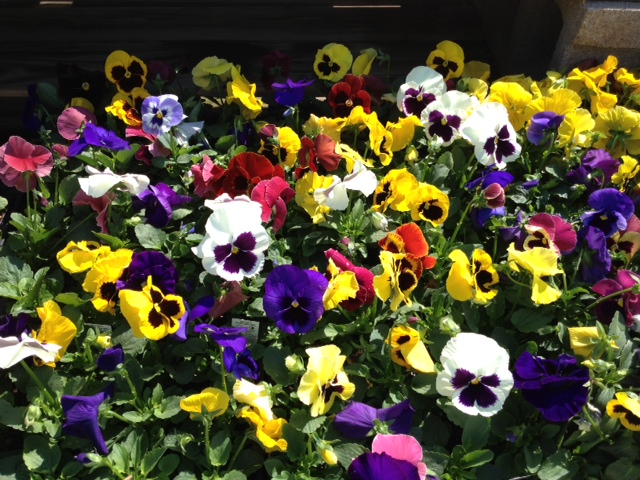Early spring is a wonderful time of the year to begin gardening. Go with what Mother Nature offers and the types of plants that appreciate the early, Cool Season Gardening conditions in March and April. Don’t worry about your warm season plants like geraniums and tomatoes until mid-May. Plant any of the following suggestions for cool weather gardening success.
Improve your soil
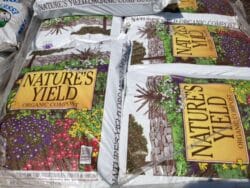 Whether you have overly clayey or sandy soil the best way to improve it is to add organic matter (OM) which eventually becomes humus. Bagged soils like, Natures Yield Organic Compost can be added as OM. Or OM may be purchased in larger quantities (by the cubic yard) or added from a homemade compost pile. Typically, a layer of 1”-2” is applied to the top of the soil and tilled to a depth of 6”-8” deep. Read More Info
Whether you have overly clayey or sandy soil the best way to improve it is to add organic matter (OM) which eventually becomes humus. Bagged soils like, Natures Yield Organic Compost can be added as OM. Or OM may be purchased in larger quantities (by the cubic yard) or added from a homemade compost pile. Typically, a layer of 1”-2” is applied to the top of the soil and tilled to a depth of 6”-8” deep. Read More Info
Start Seeds Indoors
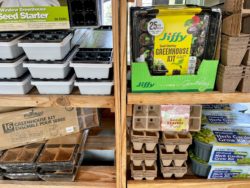 Starting seeds indoors extends your gardening season, allowing you to grow varieties that require longer growing times because they get a head start indoors and transplant well out of doors. Start tomatoes, cucumbers, melons, basil, marigolds now. Read More Info
Starting seeds indoors extends your gardening season, allowing you to grow varieties that require longer growing times because they get a head start indoors and transplant well out of doors. Start tomatoes, cucumbers, melons, basil, marigolds now. Read More Info
Plant Perennials
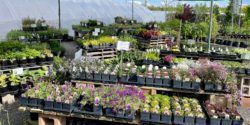 Just like all the beautiful annual flowering hanging basket and container gardens, Creek Side grows over 250 varieties of perennials right in site in our nice, cool greenhouses down on the creek. Selecting the perennial plants for your garden directly from the grower offers several advantages. Visit Creek Side today to see for yourself. Read More Info
Just like all the beautiful annual flowering hanging basket and container gardens, Creek Side grows over 250 varieties of perennials right in site in our nice, cool greenhouses down on the creek. Selecting the perennial plants for your garden directly from the grower offers several advantages. Visit Creek Side today to see for yourself. Read More Info
Plant Pansies
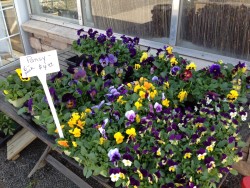 Pansies and violas are the perfect annual flower for planting in April. Everybody loves their cheerful and colorful smiling flower faces in the early season. Plant pansies in April because they love the cool, bright growing conditions that April offers. They are very cold temperature tolerant and will withstand whatever Mother Nature throws our way now. Add snapdragons, dianthus, dusty miller and alyssum for diversity. Read More Info
Pansies and violas are the perfect annual flower for planting in April. Everybody loves their cheerful and colorful smiling flower faces in the early season. Plant pansies in April because they love the cool, bright growing conditions that April offers. They are very cold temperature tolerant and will withstand whatever Mother Nature throws our way now. Add snapdragons, dianthus, dusty miller and alyssum for diversity. Read More Info
Plant Vegetables
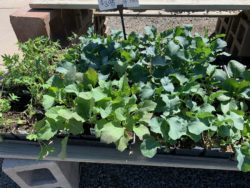 Direct sow seeds into the ground for lettuce and greens, radishes, carrots, beets, peas. Read the instructions on the seed packet for information about seed sowing depth in the soil, spacing of seeds and rows or plants and time to germination. Cover seeds with soil and tamp down firmly. Water regularly to keep seeds moist until germination begins. Use starter plants for cabbage, cauliflower, broccoli, kale, onions sets and potato tubers. This will result in a much earlier harvest than sowing seeds for these crops directly outdoors. Read More Info
Direct sow seeds into the ground for lettuce and greens, radishes, carrots, beets, peas. Read the instructions on the seed packet for information about seed sowing depth in the soil, spacing of seeds and rows or plants and time to germination. Cover seeds with soil and tamp down firmly. Water regularly to keep seeds moist until germination begins. Use starter plants for cabbage, cauliflower, broccoli, kale, onions sets and potato tubers. This will result in a much earlier harvest than sowing seeds for these crops directly outdoors. Read More Info

